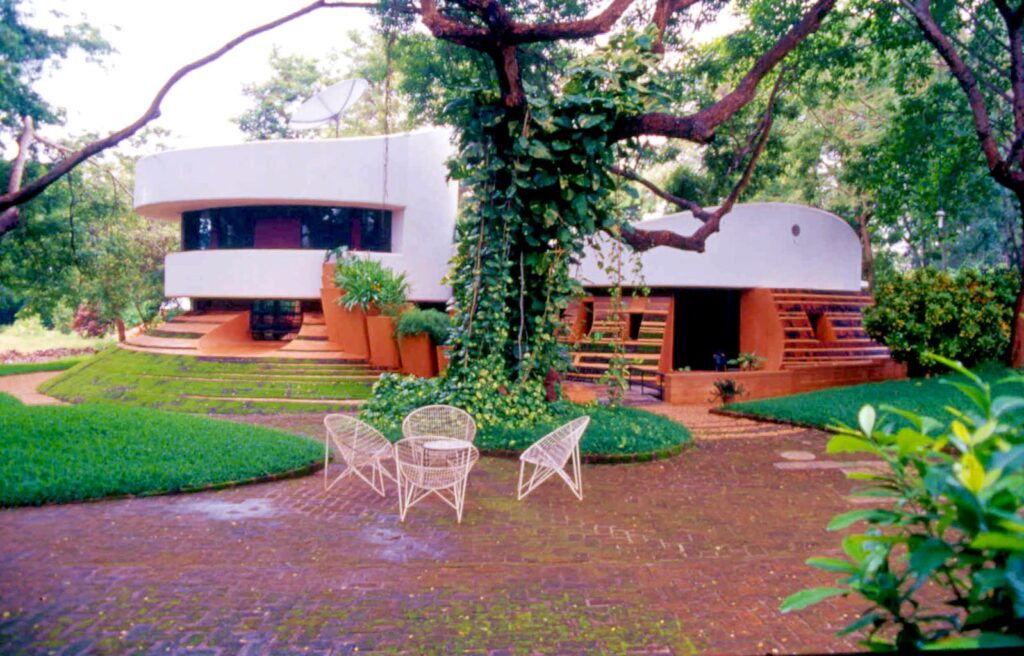Eco-Social Development
- Biological Water Management – Dynamic Balance
- Vegetable Garden and Garden – Ecological Footprint and Cargo Capacity
- Energy and Bioclimatism – Basic Needs
- Proper Technology – Spiral Growth and Limits
- Social Development – I, the community and the maze
- Training and Tourism – World heritage and nature
- Entrepreneurship and Technical Councils – Regeneration
- Environmental Management Systems – Spiritual and socio-environmental values
- Creativity and harmony – Beauty

Dynamic balance
Biological Water Management
Eastern cultures have a very different concept of development from western cultures, as is different between "Antarctic" and tropical cultures.
The universe is not quiet, it is evolving, following absolutely strict laws it creates unimaginable chaos. As Tao says, water is the liquid of life, the most valued liquid in the universe and it always looks for the lowest place.
The human ones with their laws based on power, social values, and an archaic enter of religious beliefs also want to develop, taking advantage of the same natural laws for their own benefit. This has led us to major mistakes between social, economic and racial inequalities. But it turns out that history does not forgive and the balances one day the other are reconstructed… while new imbalances are generated elsewhere.
The concept of dynamic balance departs from the thought that these imbalances that arise over and over again, due to unconsciousness or ignorance, human can simply rebalance without having to stop or "reset" the developing planet, but understanding the natural cycles, especially the ciclo of clean water.

Ecological footprint and load capacity
Vegetable garden and garden
The planet has material limits, the amounts of iron, oxygen, carbon, and all elements of the periodic table are in a certain amount. Muitos still think they were available only to the human race. But not, they should be shared with other living beings because it is in the biotic and abiotic set that prosperous life.
The amount of resources that humanity is using is called the "ecological footprint" and we must determine it both for each of the individuals, the families, the different cities, and even the different cultures, which assume different patterns of consumption, and respect for resources. On the other hand, we know that different territories have different capacities to generate and maintain their fertility, due to solar radiation, rainfall, wind, and biotic mass in the region, to this concept we call the load capacity of the territory, and we must always think of leveraging it so that it is stronger and resilient.
This is the function of gardens and vegetable gardens, to leverage fertility and to be capasses of returning maduros fruits to germinate again in the land.

Basic needs
Clean energy and bioclimatism
Governability and democracy as we know them today are increasingly trapped by laws, norms, judgments and opinion makers who own the media.
This formula works to maintain the safety of people and cities, like civil security volunteers. But this of little or nothing serves to evolve in people's internal growth.
For this we need creativity, freedom of thought, it is to say, basically freedom. That in turn for it to be effective needs to be covered with all those basic needs, such as housing, food, health, education… This is a form of spiral growth, where having basic needs democratized allows for creation freedom, which in turn should bring better conditions for everyone to use this freedom for the common good.
But amazingly, the paradigm of communist-capitalist development of non-limit growth does not allow to act according to this possibility, feeding back. Ou because it only aspires to cover the basic single-person needs by sacrificing the creative capacity of human beings, or appoints itself a bearer of creative freedom without returning to the community the benefits of that same freedom, getting caught up in its hypocrisy.
Today we have both digital and group empowerment tools that allow us to overcome these old paradigms.

Spiral Growth and Limits
Appropriate technology
In 1972, the book was published; "The Limits of Growth," a study by a group of scientists led by the couple Donella and Dennis Meadows. And in 1979, the Gaia hypothesis of James Lovelock and Lynn Margulis was published, where the theory is exposed that the planet as a whole is capable of self-regulating its constanttemperature or salinity of the oceans, among others.
Finally today the definition of development runs parallel to the limits of the ecological footprint and the load capacity of each region, development will no longer be this development without limit of paradigms; capitalist <> communist.
Different technologies, including great technological leaps, are increasingly time-lapse. We're working on a radical change in how things work. We specialize in this diversity of ideas. Different communities and different ecosystems create different complexities, and each has development solutions appropriate to their resources, their values, and their capabilities.
We must not tie this rate of consumption of modern societies to new technologies, destitling the old ones. Every technology from the most primitive to the most state-of-the-art ones such as artificial intelligence or DNA knowledge, must be used consciously for infinite long-term sustainability, not for immediate profit and programmed obsolescence.
Appropriate technologies are those that the general population understands how it works, is able to assume in its use, maintenance and its side effects.

Me, the community and the maze
Social development
When we open the garlics to all the possibilities of universal complexity appear many mias scenarios, examples of good practices in culture subtly different to our verse. In the dialectics between me and the rest of the world, including our companheira/ro, our family and friends, the other cultural compatriots, and so many groups of affinity or rivalry, we see how difficult it will be to be able to equanimizar todo on one planet.
Enter being me with all my potential and being a member of a larger community, even the one we call humanity, between these two extremes there is a labyrinth.
It is a single-person labyrinth formed of infinite daily decisions, where in one or better, many moments we erre influenced by egos, ancestral beliefs, including religious ones. Mistakes coming from ignorance, and the lack of critical spirit, and the lack of awareness in the here and now, only real time and space.
Readings and teachings of philosophy, psychology and mystique give us a lot of material to reflect on this personal-collective evolution.

World heritage and nature
Training and Tourism
In this process, the concept of creativity and freedom seem quite evident, simple and intuitive, but it is not quite so. In our view we have the transcendent moments that form part of this journey. A momento at the end of adolescence where we are finally no longer dependent on our parents and we decide who we are and what we have seen to do in the world, and not everyone is able to see clearly this momento, but it exists and who is aware of it will achieve much more harmony between their happiness and their fears. It would be a Yang moment where our strength begins to emerge. But there is somewhere else a Ying moment where the rest of the world with its inertia, with its physical-spiritual-intellectual strength will show its willingness to continue above the individuals.

Regeneration
Cities have territorial limits, and will be calculated following ecological footprint parameters of load capacity and coherent cognitive capacity.
It is to say, the city will be guided by operating algorithms with the inputs of energy and matter that enters and exits its system, defining this system with the city built its agricultural region that sustains and feeds its inhabitants, and the rest of the necessary raw materials, as well as the natural surfaces that provide the respective environmental services necessary as water, clean air, and free biodiversity. This resulting area will soon be the basis for the design of mobility logistics and universal accessibility.
Mobility technologies will be prioritized those that allow minimal displacement, improving digital services in network, following single-person services without consumption of fossil fuels such as bicycles, and the like, following by public transport with maximum clean energies such as hydrogen, biofuels or electricity, and finally transport vehicles of small private groups with fossil fuels only until clean technologists can supply this transport sector.
Communication tourism to other city ecosystems may create (and or improve existing) transport models whenever communication between the peak-end and arrival regions as well as all intermediate regions that pass in agreement with their participation, benefit and responsibility for the part of infrastructure that reaches them and does not generate imbalances between any of the parties.
This happens between regions more and less rich in fertility of the territory or tourist attractions for example.

Spiritual and
socio-environmental values
What will production be like for ecosystem cities? If we have introduced the concepts of current value and current of trust between stakeholders, as well as the concepts of circular economy, and circumscription to the bioregion, we should think of productive processes that fit these guidelines. Valorization of the region's natural resources, both biophysical and energetic, have led to industrial districts equally inserted in the city, where home work mobility will be minimized, because contaminant effects will be nullified as well, and small-scale production: Local production, Km 0.0 will be able to generate well-being families.
Small and large 3D printers will easily replace large industrial ships such as automakers, or the 3D printers themselves, how much will it cost to have a small personal chip manufacturing room in nanotechnology?
Currently the ability to operate lathes, cutters, presses and laser cutters, and 3D printers allows the manufacture of a small number of parts for construction that almost any appliance or its repair.
In the "developmental / progressive" paradigm (both capitalist and communist) the indicator of progress was a sum of tons of molten metals, tons of steel and aluminum, quantity of cars and appliances including IT produced. On the hdi accounts, the accounts of literate children, number of hospital beds and deaths from hunger are available. In the population localities these values will be quite different.
Today we have more than one car per family, several smartphone per head as items that mark families with the ability to develop in the modern mute, but also the cities will have the measure in relation to the fields and vegetable gardens necessary for their population, and for so much ninhem will starve. The indicators of steel tm or bricks will be measured exchanged for Tn of recycled by-products.

Beauty
Why are most modern cities so ugly compared to ancient cities and peoples or as their own historic centres? How is it possible that the very declaration of the Athens letter that defines that modern architecture considers aesthetics a major and very important factor for the city, while old towns and historic centers did not have this social pact on proportions, nor with the pedagogy of aesthetics, so valued with the avant-gardes of the modern movement of the early twentieth century?
The aesthetic concepts were well understood, a majority of architects understood, but not so with the urbanists, who allowed the chaos of the city without even realizing what was happening.
The city should be built with shared languages, as minimal by neighborhoods, creating and maintaining formal and iconic identities, visual and landscape identities.